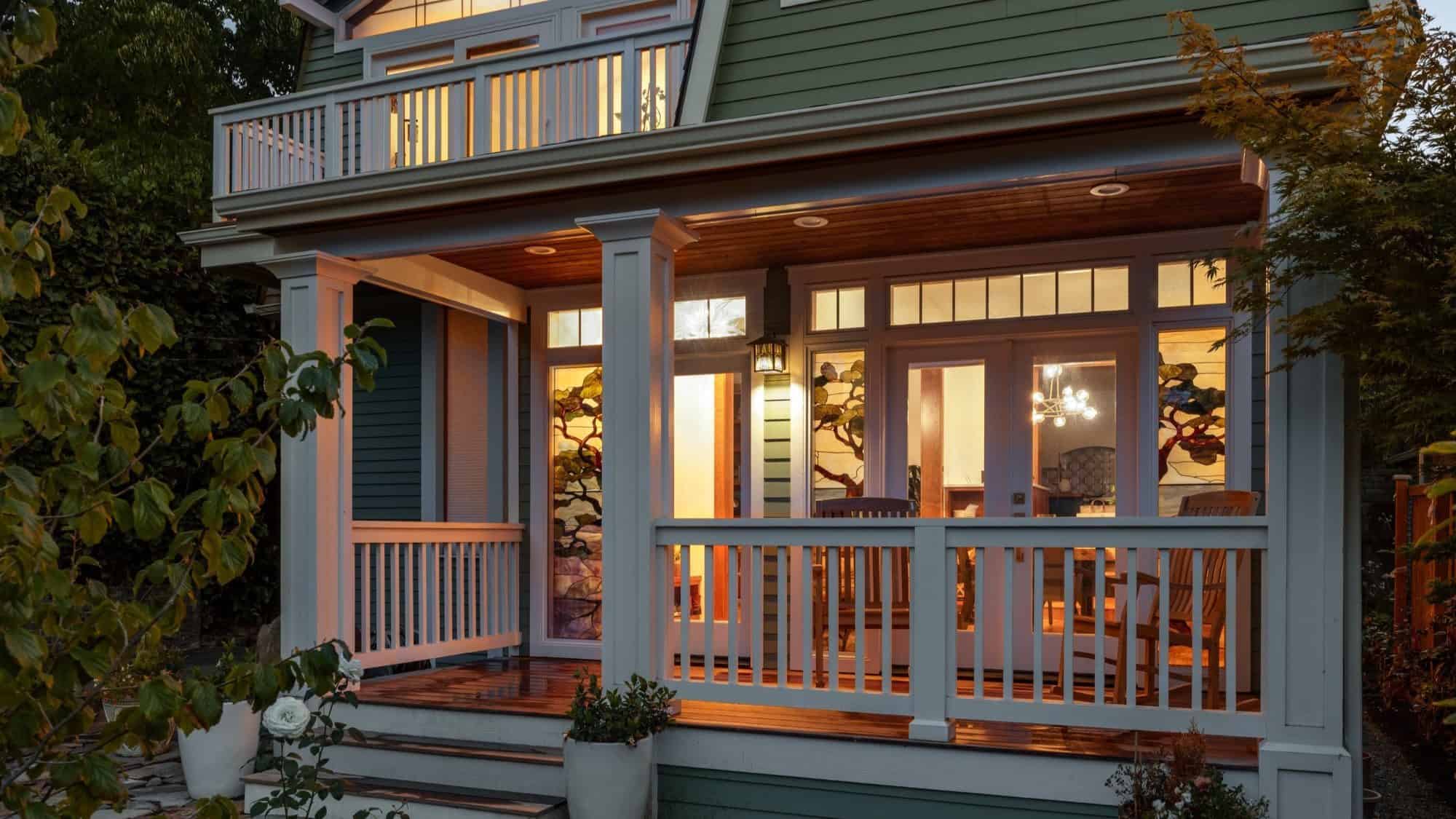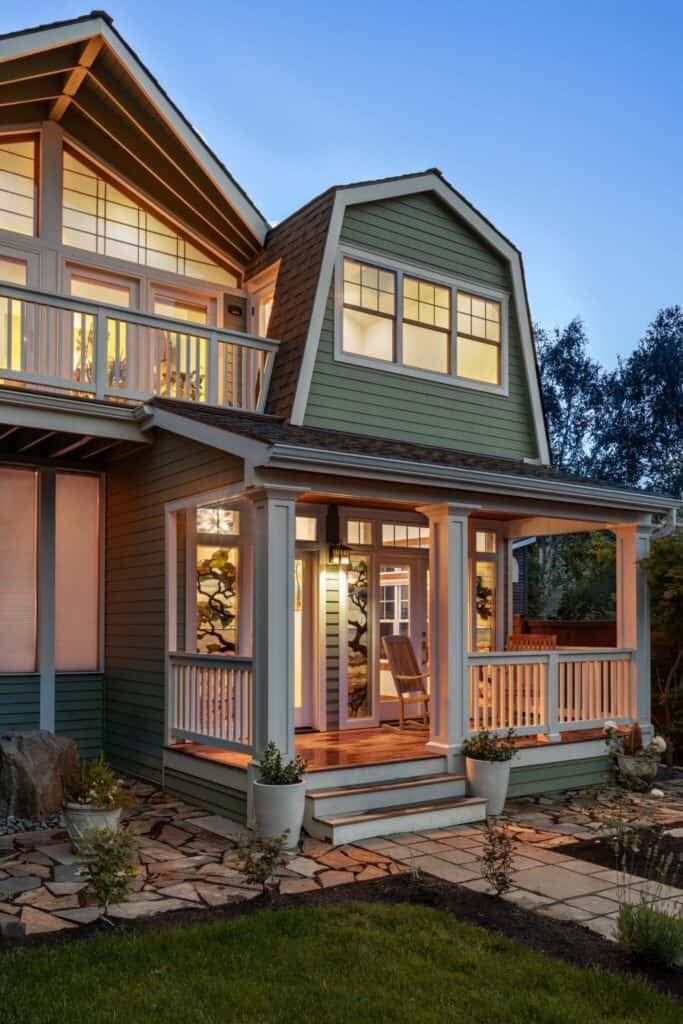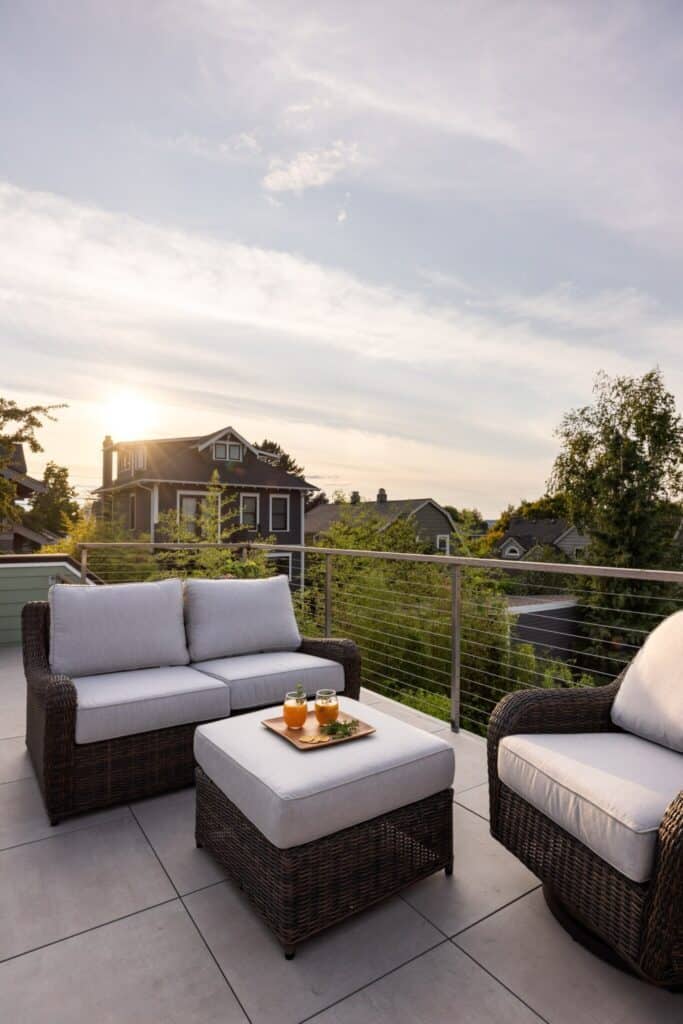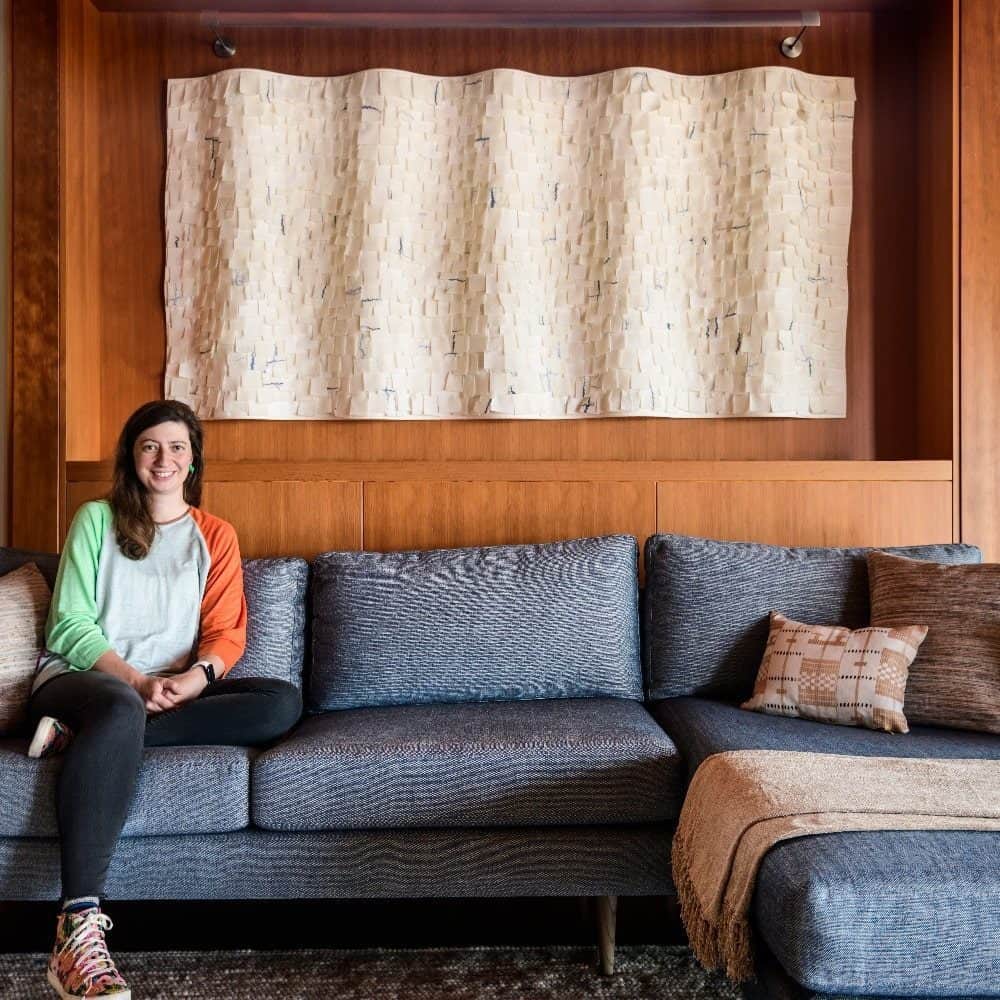At Home
Small-Scale Sensitivity
Whole-house renovation respects the aesthetics of its Capitol Hill neighborhood
By Sean Meyers April 29, 2024

This article originally appeared in the March/April 2024 issue of Seattle magazine.
Miriam Larson founded Story Architecture in the belief that, if she dug deep enough, each house and the family that lives in it would have a story to tell. In time, she would also conclude that some books are perfectly happy to be judged by their covers.
“People come in and say, ‘I don’t want anything interesting. I don’t want to tell my story. I just want a new kitchen with white cabinets,” she says. “I will pay you to design it for me. Can you do that?’”
She can, because no artisan escapes the day-to-day grind, even those as successful as Larson, who is coming off back-to-back Architect of the Year awards.
But every now and then the plot and characters conspire to create a bestseller.
The setting is Capitol Hill. The year is 1906. The protagonist is a newly constructed home that is distinguished from its peers in two important regards.

The renovation won several architectural awards.
Photo by Miranda Estes
First, in a neighborhood that is very much about privacy, the home is sited deep into the lot, affording the rare local luxury of a front yard.
Second, it is built in the Dutch Colonial Revival style, which is uncommon outside the northeastern United States. Most of the original examples of Dutch Colonial architecture were destroyed by 19th century fires in Manhattan.
Dutch Colonial homes have gambrel roofs with bent-wing gables that allow for a bit more headroom in the attic. In the revival period, many front entrances were moved from the gable end to the long side and were heavily adorned.
Flash forward to 2016 and enter this narrative’s “deuteragonists” — Subhu and Rukmini Balakrishnan, a California empty-nester couple looking to ease Rukmini’s commute to Microsoft and eventually relocate to the area.
“Rukmini and I are first-generation immigrants from India. We came to Boston more than 30 years ago for graduate school and were fortunate to find academic and career opportunities in the U.S.,” Subhu recalls. “We had very few roots anywhere to speak of and home was where we were. We absorbed the culture of our surroundings.”
Their story is, in many ways, classic Americana. They spent 10 years in Boston embracing the Red Sox, and another 20 in the Bay Area working overtime, juggling kids and extracurricular activities. They dreamed of a single-family home with a porch, fireplace, nice kitchen, and wood floors and cabinets.
They liked the Capitol Hill home’s unique roofline, created in part by a circa-1980s addition. They also appreciated its light-hoarding east windows, history, charming garden setback and clever blend of old and new.
But there was no suitable office space, and they required two. The kitchen argued convincingly for an update. The second floor bathroom, while fabulous, consumed one-third of the total square footage. A third-story addition would enable a coveted water view. The new nest also needed to be prepped for migratory visitors.
“Both our moms will be with us for at least some months in a year and neither can climb stairs without help,” Subhu says. “Having a bedroom on the lower floor with a comfortable bathroom and access to the kitchen is a key requirement for family harmony.”
Cooking is a joyous group exercise in this family, so all that was required of the new island was a utilitarian butcher-block top (Armani Fine Woodworking) and a bar sink. The cobalt-blue island matches the ILVE stove that was imported from Italy. The lone custom tile in the remodel is the Dutchthemed peacock-and-floral backsplash. The ceramic artist, located on Etsy, delivered the completed tile in just six weeks.
The new design features mostly warm tones accentuated with brass hardware, but cold blues and greens are peppered throughout the kitchen and bathrooms to add interest and are in harmony with the home’s provenance.

The design features mostly warm tones.
Photo by Miranda Estes
Cabinetry in the dining room to kitchen pass-through was inspired by photographs of historical Queen Anne and Capitol Hill homes. Three large-volume stained-glass panels grace the entry and dining room at the behest of Rukmini, who was inspired by stained glass in the original entry door. Larson located the trees in nature designs online, tracked down the artist and arranged a commission for its use.
Cherrywood trim — or “bright work” in the trade — is generously distributed throughout the house, but muted in the kitchen in favor of lighter tones to promote a sense of spaciousness. The floors are engineered hardwood.
The living room is anchored by a mortar-free quartzite fireplace.
The Balakrishnans liked the second-floor shoji screen-style gable window that came with the house, so Larson designed the master suite around it, including a fireplace, walk-in closet, adjacent office, and Brazilian ipe hardwood deck. The master bath tile was flipped from horizontal to vertical orientation to lend an exotic look. “They wanted what every client wants — a spa in their bathroom,” Larson says.
There were, however, complications.
“Miriam had verified that a third floor would not be permitted with building codes, but it was possible to have a roof deck,” Subhu recalls. “Then we found two articles — one from Seattle magazine — and the deck went from idea to plan.” Larson devised an external stairway with precast concrete treads leading to the greatly anticipated 212-square-foot deck, which opened up views to Portage Bay and Husky Stadium.
“It was a tricky design-and-build challenge, from a drainage standpoint, from a framing standpoint and from a structural standpoint,” Larson notes.

The homeowners can access the new roof deck from the interior to enjoy sweeping views of the neighborhood.
Photo by Miranda Estes
An ipe deck (a strong and durable domestic hardwood) would attract too much heat in a rooftop application. To meet energy conservation goals, 24-by- 24-inch refl ective ceramic pavers were suspended on pedestals over a waterproof membrane-protected sub-deck that slopes to the drainage system.
Larson grew up in Seattle and knew from a young age that she would become an architect — her best friend lived on Capitol Hill, and they would take walking tours to admire the homes — but took the road less traveled to her present position. She supplemented her formal architectural education with a self-directed curriculum that included woodworking in Vietnam and serving as a woodcarver’s apprentice in Laos.
After graduation, she signed locally with JAS Design Build, which has served as an incubator of sorts for contractors and subs who go on to launch their own businesses. “
I realized I didn’t really understand how the buildings I was designing were actually put together,” she says. “I didn’t want to be the typical architect on high, sending down designs. I started out carrying bags of concrete and cleaning up job sites, and worked my way up.”
She remains a heavy lifter, with multimedia art that includes Soul Garden, a Covid memorial conceptualization; The Urchin Citadel, an exploration of how women affect the cultural landscape; and Submerged Sanctuary, which imagines a Seattle underground transformed with sleeping pods and hanging gardens to provide emergency shelter for homeless women and children. Her work has appeared at the Seattle Architecture Foundation and New York Design Week.
The Capitol Hill renovation, in the careful hands of Blue Sound Construction, won excellence awards from the Master Builders Association of King and Snohomish Counties, as well as the Building Industry Association of Washington.
“I always try to think about what the house would want from a renovation,” she adds. “So many people are maximizing square footage, tearing down old homes, and putting up sterile boxes, which is a shame in this neighborhood. These clients wanted to be sensitive to the house and the site, which made it a unique and special project.”
“We absorbed the old home that was here and added to it,” Subhu notes. “This has been our story, so to speak. We see our story in the roof that was and still is, and the office we’ve added in the same shape. We see it in the new porch overlooking the lovely garden that was and remains, and the custom bookcase in the living room full of books from all our years.”
Their American dream continues, this time in the heart of Seattle.




